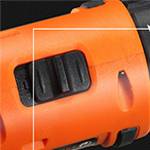Stationary Mixer for Animal Feed Production and Efficient Mixing Solutions
Dec . 02, 2024 07:57 Back to list
Stationary Mixer for Animal Feed Production and Efficient Mixing Solutions
The Importance of Stationary Feed Mixers in Modern Agriculture
In the fast-paced world of modern agriculture, efficiency and precision are paramount. One key player in this arena is the stationary feed mixer, an essential tool for livestock farmers and feed manufacturers alike. These machines facilitate the optimal blending of various feed ingredients, ensuring that livestock receive balanced nutrition, which is critical for their growth, health, and overall productivity.
Understanding Stationary Feed Mixers
Stationary feed mixers are large, fixed machines designed to mix feed ingredients uniformly. Unlike their mobile counterparts, which are mounted on trailers or trucks, stationary mixers are permanently installed in a specific location, such as a feed mill or a farm. They come in various sizes and configurations, including horizontal and vertical mixing systems, each with unique characteristics suited to different types of feed and operational needs.
Key Components and Operation
A typical stationary feed mixer consists of a mixing chamber, an agitation mechanism, and an inlet for ingredients. The mixing chamber may feature paddles or screws that move the materials, ensuring thorough mixing. Many advanced models also incorporate various sensors and controls that allow for precise ingredient measurement, aiding in the formulation of custom feed rations.
The operation of a stationary feed mixer begins with the loading of raw ingredients, which may include grains, forages, protein meals, and minerals. The machine then precisely blends these ingredients according to specific recipes designed to meet the nutritional needs of livestock. This process can take anywhere from a few minutes to an hour, depending on the mixer’s size and the complexity of the feed formula.
Advantages of Using Stationary Feed Mixers
stationary feed mixer

One of the primary benefits of stationary feed mixers is their ability to produce large volumes of feed quickly and efficiently. By mixing feed in bulk, farmers can save time and reduce labor costs associated with daily feed preparation. Furthermore, the consistency achieved by using a stationary mixer helps to ensure that each feeding meets the nutritional requirements of the animals, which can lead to improved health and productivity.
Another advantage is the reduced risk of feed spoilage. Stationary mixers often have built-in systems that allow for minimal exposure to air and contaminants during the mixing process. This not only helps to maintain the quality of the feed but also extends its shelf-life, ultimately benefiting bottom-line profitability.
Enhancing Feed Quality and Nutritional Value
The calibration capabilities of stationary feed mixers play a crucial role in enhancing feed quality. With the ability to accurately measure and mix a wide array of ingredients, farmers can formulate specific diets tailored to their livestock's needs, whether they are cattle, pigs, poultry, or other animals. This level of customization is increasingly important as consumers become more discerning about animal welfare and product quality.
Moreover, the uniformity in mixing provided by stationary feed mixers minimizes the risk of nutrient segregation, ensuring that each animal receives a balanced diet. This is especially significant in large herds where variations in individual animal feeds can lead to health problems and inefficiencies in growth.
Conclusion
In summary, stationary feed mixers are indispensable tools in the agricultural sector, playing a vital role in the efficient preparation of livestock feeds. By ensuring the consistent blending of ingredients, these machines contribute to enhanced feed quality, animal health, and overall farm productivity. As the agricultural industry continues to evolve, the importance of technologies such as stationary feed mixers will only grow, reinforcing their status as essential components in the pursuit of sustainable and efficient farming practices.
-
Hot Sale 24 & 18 Door Rabbit Cages - Premium Breeding Solutions
NewsJul.25,2025
-
Automatic Feeding Line System Pan Feeder Nipple Drinker - Anping County Yize Metal Products Co., Ltd.
NewsJul.21,2025
-
Automatic Feeding Line System Pan Feeder Nipple Drinker - Anping County Yize Metal Products Co., Ltd.
NewsJul.21,2025
-
Automatic Feeding Line System - Anping Yize | Precision & Nipple
NewsJul.21,2025
-
Automatic Feeding Line System - Anping Yize | Precision & Nipple
NewsJul.21,2025
-
Automatic Feeding Line System-Anping County Yize Metal Products Co., Ltd.|Efficient Feed Distribution&Customized Animal Farming Solutions
NewsJul.21,2025






